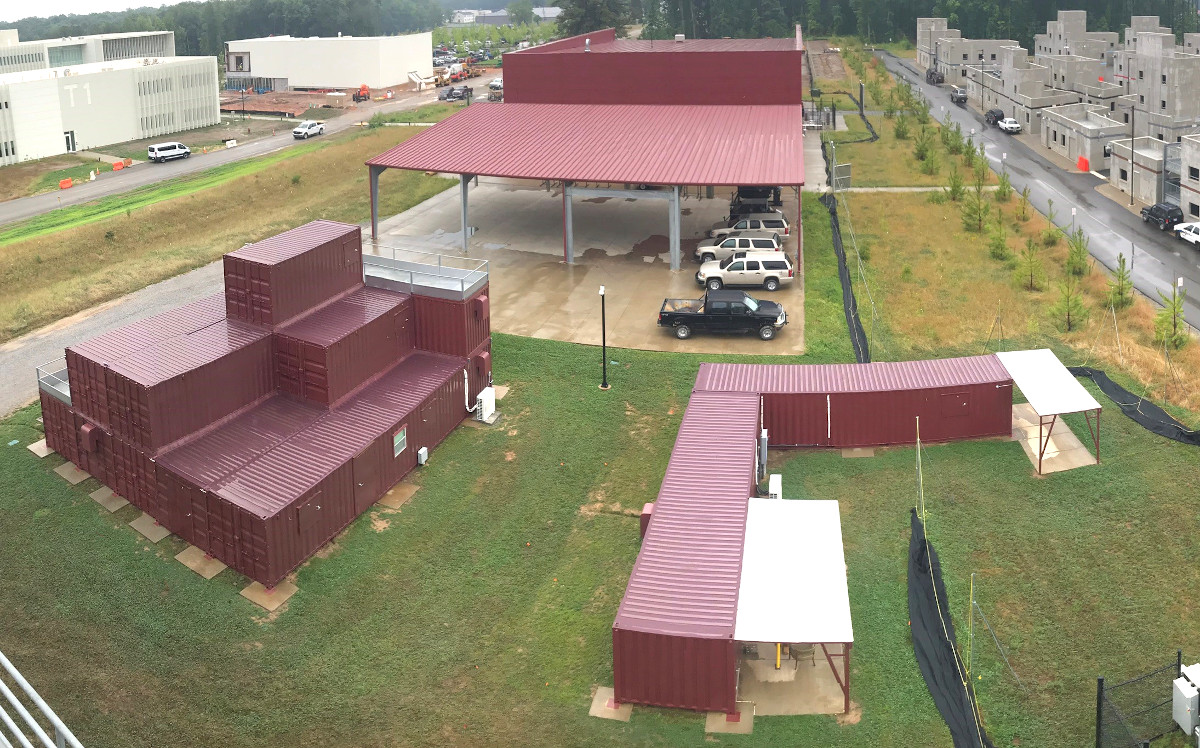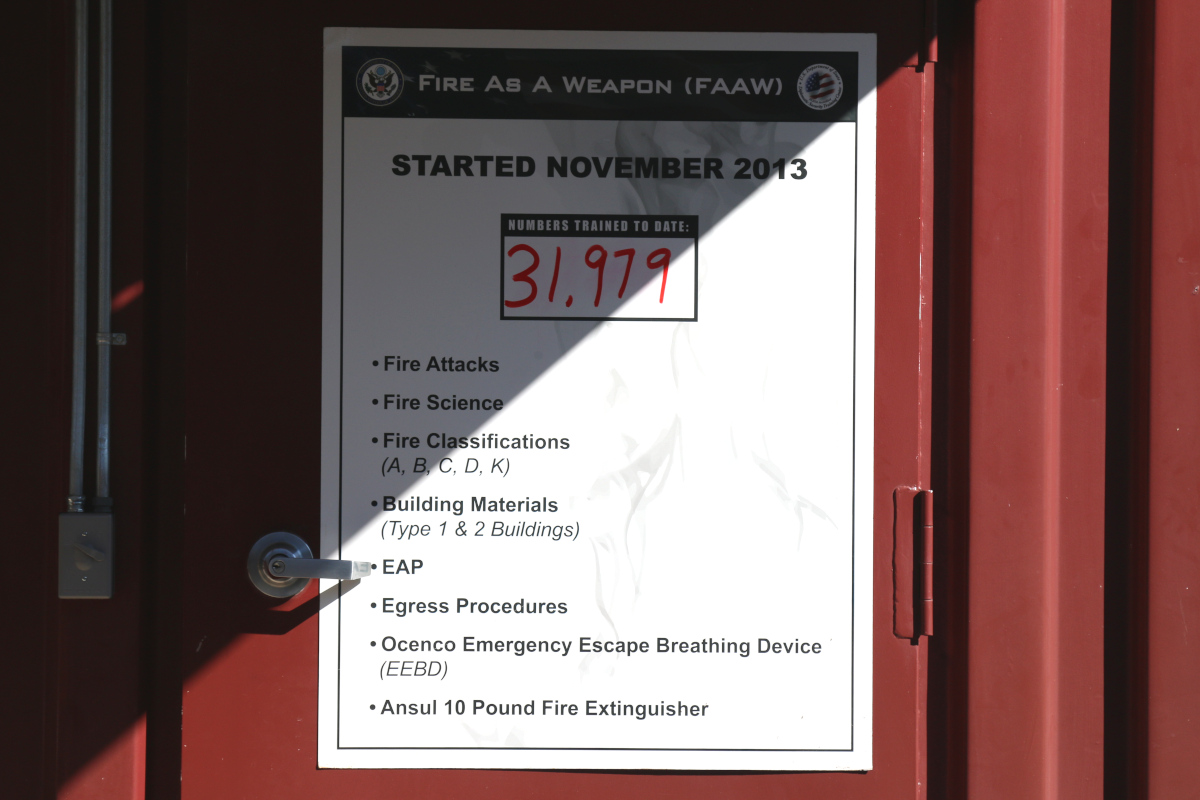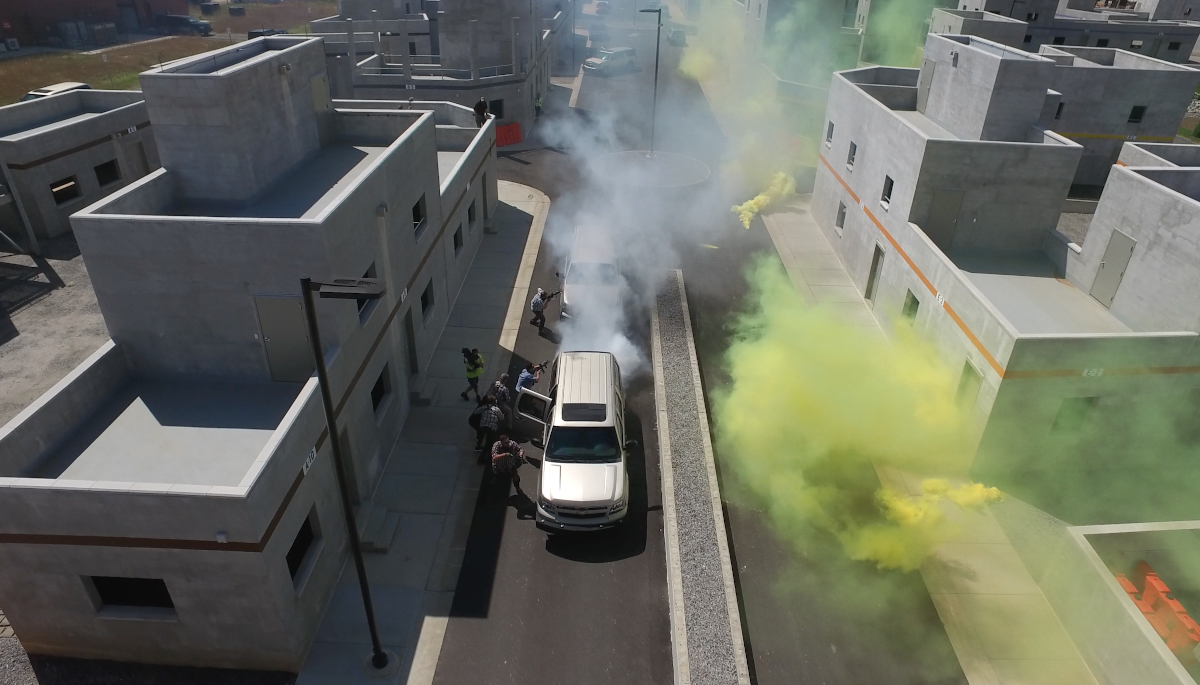The U.S. Department of State has released videos and photos showing a part of a training course for diplomatic staff covering how to respond to attacks on their compounds involving incendiary weapons and other deliberately set fires, as well as how to quickly and safely escape burning buildings, if necessary. The State Department, among other U.S. government agencies, saw a pronounced need for personnel to have these skills sets after the infamous Benghazi Consulate attack in 2012. During that incident, terrorists torched a part of the diplomatic compound, leading to the deaths of then-U.S. Ambassador to Libya Christopher Stevens and Foreign Service Officer Sean Smith from smoke inhalation.
The demonstration of the so-called “smokehouse” training facility was part of a media package accompanying the official opening of the Foreign Affairs Security Training Center (FASTC) in Blackstone, Virginia, on Nov. 14, 2019. The FASTC, the State Department’s newest training center, has been operating on a limited scale for some time already and the State Department expects it to become fully operational before the end of the year.
There are actually multiple smokehouses at FASTC, each made up of a number of modified shipping containers, including an L-shaped one and a multi-story structure, which would offer a more complex training experience. The videos that the State Department released shows that during a training session, these structures are deliberately filled with so much smoke that it is virtually impossible to see.

As a result, the clip, seen below, primarily shows the view through a handheld thermal imager, such as the ones firefighters use to find and rescue individuals in burning buildings, and it would be otherwise difficult to tell what’s going on. Beyond the visual impairments, which also include limited light and strobing lights, the kind one would associate with many modern fire alarm systems, the smokehouse is also filled with a cacophony of noise. This includes recordings of gunfire, people shouting, crying babies, and more.

Another, potentially seizure-inducing clip, seen below, filmed mostly without the aid of the thermal imager, gives a great sense of just how disorienting the entire experience must be for the participants.

This is the exact kind of sensory overload State Department personnel might actually have to deal with while trying to escape from a real burning structure in the immediate aftermath of an attack. This is undoubtedly valuable added realism to go along with what might, in a vacuum, seem like simple fire safety instructions that most Americans learn in grade school – things like stay low, stay together, first check a door handle to see if it is hot to avoid potentially opening it to find a raging fire on the other side.

It’s not surprising, given the notoriety of the Benghazi attack, that the State Department choose to highlight the smokehouse and the rest of the Fire As A Weapon (FAAW) training course during the formal opening event with media in attendance. Nearly 32,000 State Department personnel and contractors have passed through the FAAW training program, which is offered at multiple sites, according to a placard on the smokehouse.

That same sign says that in addition to learning how to safely crawl out of a burning building in a potential warzone, individuals in the course also learn about typical fire attack tactics, the science of fire itself and what different kinds of fires can do to different materials, how to use a 10-pound fire extinguisher, and the proper employment of the Ocenco Emergency Escape Breathing Device (EEBD).
The EEBD has been in service with militaries, primarily navies, including the U.S. Navy, for years. In the simplest terms, this device is a self-contained oxygen supply that will work for between 10 to 15 minutes, offering time for an individual to try to escape from a smoke-filled area to safety. The Navy video below shows the procedure for using this system.

The State Department’s Diplomatic Security Service (DSS) expects to train up to 10,000 personnel each year at the sprawling training area, including DSS agents, diplomatic staff, and contractors bound for stints at embassies and other diplomatic facilities abroad. FASTC offers a host of other training spaces, as well.
This includes indoor shoot houses, explosives ranges, mock urban environments, high-speed and off-road driving courses, and more. Much of the facility looks like many other highly realistic Military Operations in Urban Terrain (MOUT) sites that the U.S. military and other government agencies use around the country. Many foreign countries utilize similar training centers, as well.



All told, the FASTC looks set to play a major role in preparing DSS and other diplomatic personnel, as well as others heading to take up positions working for the State Department overseas in potentially dangerous locales. In a post-Benghazi world, the smokehouse training will no doubt continue to be an especially important part of ensuring those individuals are as prepared as they can be for a worst-case scenario.
Contact the author: joe@thedrive.com
